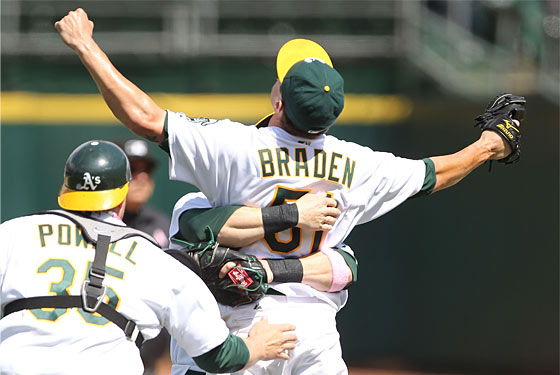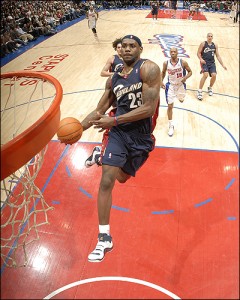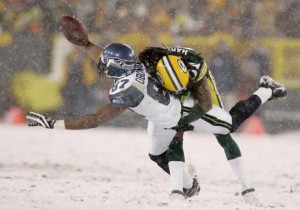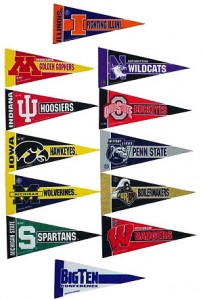|
 The New York Times noted the other day a statistical oddity regarding two of baseball’s most difficult achievements, the perfect game and the no-hitter: The New York Times noted the other day a statistical oddity regarding two of baseball’s most difficult achievements, the perfect game and the no-hitter:
Dallas Braden’s perfect game for Oakland has generated plenty of press, and only partly because of his feud with Alex Rodriguez. A perfect game is celebrated with bold headlines because it is one of baseball’s rarest achievements. But somehow, without anyone noticing, the perfect game has started to become more common, while no-hitters over all have become harder to come by.
Before 1998, only 6 percent of no-hitters were perfect games, but from 1998 to 2003, 20 percent were, and since then 27 percent have been.
From 1900 through 1980, baseball witnessed only seven perfect games, including two in the dead-ball era and three during the glory days for pitchers in the mid-1960s. But in the 30 seasons beginning with 1981, nine pitchers have achieved perfection. And, oddly, regular no-hitters have decreased in frequency while becoming more erratic in their appearance.
“There is probably a fair amount of chance involved†in the jump in perfect games, said Rob Neyer, a baseball columnist with ESPN. He says the rise of free-swingers helps because strikeouts mean fewer balls in play and thus fewer possible hits and errors — although he noted that fewer balls in play should also mean more no-hitters. Improved fielding has probably helped as well, he said.
In the 20 years before Babe Ruth and the live ball era of 1920, no-hitters were far more common, with pitchers hurling 48 of them. In the two decades that followed — the most explosive offensive period before the steroids era — there were just 16 no-hitters, one of which was a perfect game. Baseball found an equilibrium in the 1940s and ’50s and that span yielded 30 no-hitters.
Not surprisingly, the swinging (and missing) ’60s produced an astonishing 30 no-hitters, along with three perfect games, but even after baseball lowered the pitching mound, pitchers churned out 31 no-hitters in the 1970s. In other words, from 1960-1979, baseball averaged more than three no-hitters per season yet only one perfect game about every seven years. Since then, the pattern has shifted: There have been 48 no-hitters over the past 30 years, meaning it now takes two seasons to produce three no-hitters. In the last decade, there were only 13 — none in 2000 and only one (a perfect game) from June 11, 2003, through Sept. 6, 2006.
That decline might make sense considering that the strike zone, the ballparks, the ball and steroids all conspired to boost offense, yet there have been 10 perfect games in that span, meaning they are now coming along every three seasons on average instead of every seven. In fact, perfect games before this year were fairly evenly spaced out, appearing in 1981, 1984, 1988, 1991, 1994, 1998, 1999, 2004 and 2009.
Perhaps it’s just a statistical oddity. Perhaps it’s the fact that, in the modern era, when someone does get on base, even if by a walk in what is otherwise a no-hitter, the odds of getting them out decrease. Perhaps it’s a reflection of the decline in fielding on some teams.
But if it means more perfect games, then I’m all for it.
 Once again, LeBron James and the Cleveland Cavaliers fell short in the quest for an NBA Championship: Once again, LeBron James and the Cleveland Cavaliers fell short in the quest for an NBA Championship:
BOSTON (AP) — The Boston Celtics sent LeBron James and the Cavaliers back to Cleveland to admire all of their regular-season accomplishments.
It’s the Celtics who are still in the chase for an NBA title.
Kevin Garnett scored 22 points and added 12 rebounds, and Rajon Rondo had 21 points and 12 assists to beat Cleveland 94-85 in Game 6 on Thursday night. Boston advanced to the Eastern Conference finals, which begin Sunday in Orlando against the Magic, who are 8-0 in the playoffs after sweeping the Charlotte Bobcats and the Atlanta Hawks in the opening rounds.
Despite his fifth career playoff triple-double, James is headed for another early offseason after winning a second MVP award and leading the Cavs to an NBA-best 61 wins and a home-court advantage they never got to use.
This one is destined to define the future of the franchise — and the rest of the NBA, too.
The LeBron watch began at 10:53 p.m., when Rondo dribbled out the last 14 seconds and the Celtics began celebrating. James is eligible to opt out of his contract this summer, a move that would make the two-time MVP — and zero-time NBA champion — a free agent and set off a scramble for his services from New York to Miami to Los Angeles and, of course, back in Cleveland.
”We know their team is fueled by one guy, and he has a hell of a supporting cast,” Garnett said. ”We knew that if we could somehow, someway control that supporting cast, then we had a good chance of beating this team.”
It’s long been speculated that this would be James’s last year in Cleveland if the Cavaliers didn’t win a Championship, and that he’d utilized the opt-out provision in his contract to move to a team that had a better chance of going all the way. Clevelanders, on the other hand, have always held out the hope that James’s ties to the community would keep him in town.
With the playoffs over once again for the Cavs, the ball is, quite literally, in LeBron’s court.
 The states of New York and New Jersey think that they can convince the National Football League to schedule a Super Bowl for January in an open-air stadium in the north: The states of New York and New Jersey think that they can convince the National Football League to schedule a Super Bowl for January in an open-air stadium in the north:
There could be the commissioner’s party at the American Museum of Natural History and another party with a view of the Statue of Liberty from Liberty State Park. Maybe a breakfast at Tiffany & Company for team owners and their families. Perhaps even a Super Bowl float in the Macy’s Thanksgiving Day Parade.
The bid to host the 2014 Super Bowl at New Meadowlands Stadium, portions of which were obtained by The New York Times in advance of its Wednesday unveiling, dresses the Super Bowl in a giant “I Love New York†T-shirt, spinning even the prospect of bad weather as a chance to go “old school†and embrace a link to some of the N.F.L.’s storied cold-weather games.
Yet for all the spectacular possibilities proposed, the mundane realities of dealing with winter are likely to dominate the conversation about the bid. The plan includes elaborate contingencies for Super Bowl week, everything from providing hand warmers to fans at the game to having hundreds of people standing by with shovels to dig out the stadium. No wonder the proposal calls other public spectacles that have played out in the area, like papal Masses, “practice†for the Super Bowl.
“The focus was on those things that only this community and this stadium can provide,†said one bid official, who spoke on the condition of anonymity because the plans were not final.
It would certainly be a change for the NFL’s marquee event. The Super Bowl has never been played outdoors in the north, and the coldest recorded game time temperature in Super Bowl history was 39 degrees during Super Bowl VI in New Orleans. New York’s weather in January could be much colder, and snow, ice, sleet, or rain are not at all out of the possibility.
But, the bidding committee is trying to turn the possibility of bad weather into a positive:
“Playing the game in a cold weather outdoor setting will add yet another element of intrigue,†it reads. “The game will take on the ‘old school’ feel of the great outdoor contests of the past, yet it will be played in one of the league’s most technologically advanced stadiums.â€
The committee is prepared for the worst, though. The teams, which will practice at the Giants’ and the Jets’ new facilities in New Jersey, which both have indoor fields, will stay at hotels within a few miles of the sites. The bid is built on having up to 800 people with shovels ready to clear the stadium, although more could be added if needed.
Part of the bid calls for covering some of the openings in the stadium to cut down on the wind and for using heaters to warm the concourses. There will be seat and hand warmers. And perhaps fire pits in the parking lots before the game.
“We’re really trying to embrace the weather and make it more of a communal experience,†the bid official said
That does sound a bit like putting lipstick on a pig, but there’s no doubt that a Super Bowl held in something other than a climate-controlled or climate-perfect environment would add a new element to the game, quite literally.
Will the NFL owners be willing to take the risk ? I think they should.
If this report from a Kansas City sports radio station is to believed, the Big Ten Conference is thinking big when it comes to expansion:
 The Big Ten Conference has extended initial offers to join the league to four universities including Missouri and Nebraska from the Big 12, according to multiple sources close to the negotiations. The Big Ten Conference has extended initial offers to join the league to four universities including Missouri and Nebraska from the Big 12, according to multiple sources close to the negotiations.
While nothing can be approved until the Big Ten presidents and chancellors meet the first week of June in Chicago, the league has informed the two Big 12 schools, Notre Dame and Rutgers that it would like to have them join. It is not yet clear whether the Big Ten will expand to 14 or 16 teams but sources indicated Missouri and Nebraska are invited in either scenario. Notre Dame has repeatedly declined the opportunity to join the Big Ten. If Notre Dame remains independent, Rutgers would be the 14th team. The Big Ten would then decide whether to stop at 14 or extend offers to two other schools. If Notre Dame joins, sources say an offer will be extended to one other school making it a 16-team league.
All four are interesting choices, for different reasons.
Notre Dame, of course, is a prize that the Big Ten has been pursuing for years, but it’s always been the one that got away. Given their lucrative television contract and national fan base, remaining independent has always seemed to be to Notre Dame’s advantage. Times are changing, though, and the Fighting Irish aren’t what they used to be. Putting them at the center of a conference where they would be instantly competitive might just be what’s needed to reinvigorate a program still hurting from the Charlie Weis years.
Rutgers seems like a odd choice at first because of it’s geographic distance from the rest of the Conference, but there are two reasons why it makes sense. Under Greg Schiano, the Rutgers football program (and make no mistake, this expansion is mostly geared toward football) has become credible in a way that it never was before. When I attended there in the late 80s and the Scarlet Knights played a rare game against Michigan State, it was an occasion for laughter in Lansing, Michigan. Not anymore. Second, bringing in Rutgers gives the Big Ten access to two of the biggest media markets in the country, which would be a big deal for both football and basketball.
As for Missouri and Nebraska, it’s interesting that the Big Ten would be so brazen about poaching from the Big 12, but both schools would be excellent additions on the football side to a conference that has come to be dominated in recent years by Ohio State and Penn State. Bringing the Tigers and Cornhuskers into the conference, along with Rutgers and Notre Dame, would instantly make football season much more competitive.
All in all, this seems like a smart move for the Big Ten.
|
|
 The New York Times noted the other day a statistical oddity regarding two of baseball’s most difficult achievements, the perfect game and the no-hitter:
The New York Times noted the other day a statistical oddity regarding two of baseball’s most difficult achievements, the perfect game and the no-hitter:




 The states of New York and New Jersey think that they can
The states of New York and New Jersey think that they can  The Big Ten Conference has extended initial offers to join the league to four universities including Missouri and Nebraska from the Big 12, according to multiple sources close to the negotiations.
The Big Ten Conference has extended initial offers to join the league to four universities including Missouri and Nebraska from the Big 12, according to multiple sources close to the negotiations.




